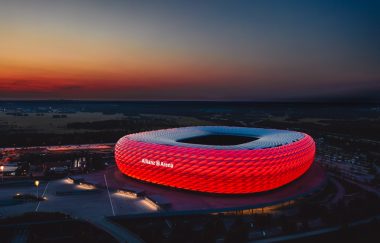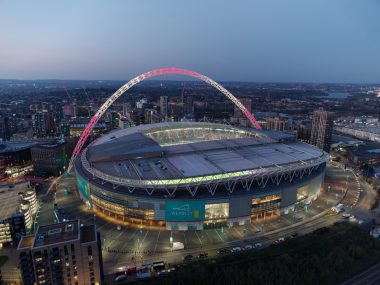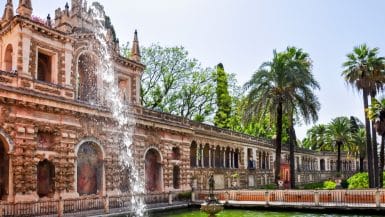It is estimated that there are about 3 to 3.5 billion football fans worldwide. Of course, this is very subjective, but in some studies this number is even inflated. We all know that King Football is the ruler of all sports and an absolute social phenomenon. But what would our favourite sport be without the stadiums? Without the huge plants around the world, its massiveness would be inconceivable.
The first stadiums were built thousands of years ago, and since then, their stands have experienced many sincere emotions – the joy of victory, but also the disappointment of defeat. In some cases, so much imagination and innovation is used in the construction of a stadium that simple sports facilities become true works of art.
The six most beautiful and unusual stadiums in Europe
If you’re one of the billions of football enthusiasts, whether you’re playing, just watching, or placing an online bet on your favourite club every weekend, we hope you’ve met your taste with these six of the most famous stadiums.
Camp Nou Stadium
Camp Nou is a stadium owned by FC Barcelona since its construction in 1957. Classified as a 5-star stadium by UEFA, it has hosted numerous high-profile international matches and Champions League finals, most recently in 1999. With a capacity of 99,354 seats, it is the largest stadium in Europe and eleventh in the world.
The slogan of the Catalans from Barcelona “Mes que un Club” or in German “more than a club” is known throughout the football world. The Argentine football wizard Lionel Messi will forever go down in the history of this stadium with his 600 goals for Barcelona, just like this slogan.
Old Trafford Stadium
The “Theatre of Dreams”, as the legendary Sir Bobby Charlton called it, is the home of Manchester United. The Red Devils have been playing here since 1910. With 76,411 seats, Old Trafford has the second largest capacity of all English club stadiums. It is one of only two English stadiums to be awarded five stars by UEFA.
Fans from all over the world flock to cosmopolitan Old Trafford at every home game to experience the magic of the stadium and see one of football’s most successful clubs.
Allianz Arena

The beautifully designed Allianz Arena is home to Munich’s two football teams – Bayern Munich and 1860 Munich. It is the only stadium in Europe that can change its colour depending on the match between the two teams – red for Bayern and blue for the German third division team.
With a capacity of 75,000 seats, the Allianz Arena will remain one of the largest stadiums in world football in the coming years.
Santiago Bernabéu Stadium
With a record 13 Champions League titles, Real Madrid is one of the most successful teams in history, and Santiago Bernabéu has the honour and privilege of being their home stadium.
It was opened in 1947 and renovated twice – in 1982 and 2001 – to meet the ambitions of the “Royal Club”. Almost all of the historically most important players have played here at some point. Even though it is overshadowed by Camp Nou, the Santiago Bernabéu will always be preferred as a venue for football events.
Signal Iduna Park Stadium
The Westfalenstadion or the Signal-Iduna-Park-Stadion is the home of the Bundesliga club Borussia Dortmund. The South Stand has the largest standing stand in European football with a capacity of 24,454 seats.
It is known for its atmosphere and the name “Yellow Wall” because of the colors of the scarves and the flags of the Borussia Dortmund fans. It’s one of the few remaining stadiums where you can still eat a real bratwurst and drink German beer while enjoying the game.
Wembley Stadium

Wembley Stadium is the most famous stadium in world football. With its 90,000 seats, it is the second largest stadium in Europe after the Camp Nou. It is also called “New Wembley” to distinguish it from the old stadium, which was located on the same site and was demolished in 2003.
The former Wembley Stadium, formerly known as Empire Stadium, is one of the world’s most famous football facilities and is dubbed the ‘home of football’. It has hosted numerous world-class events such as the World Cup final, the European Championship final, the Summer Olympics and the six European Cup finals.




